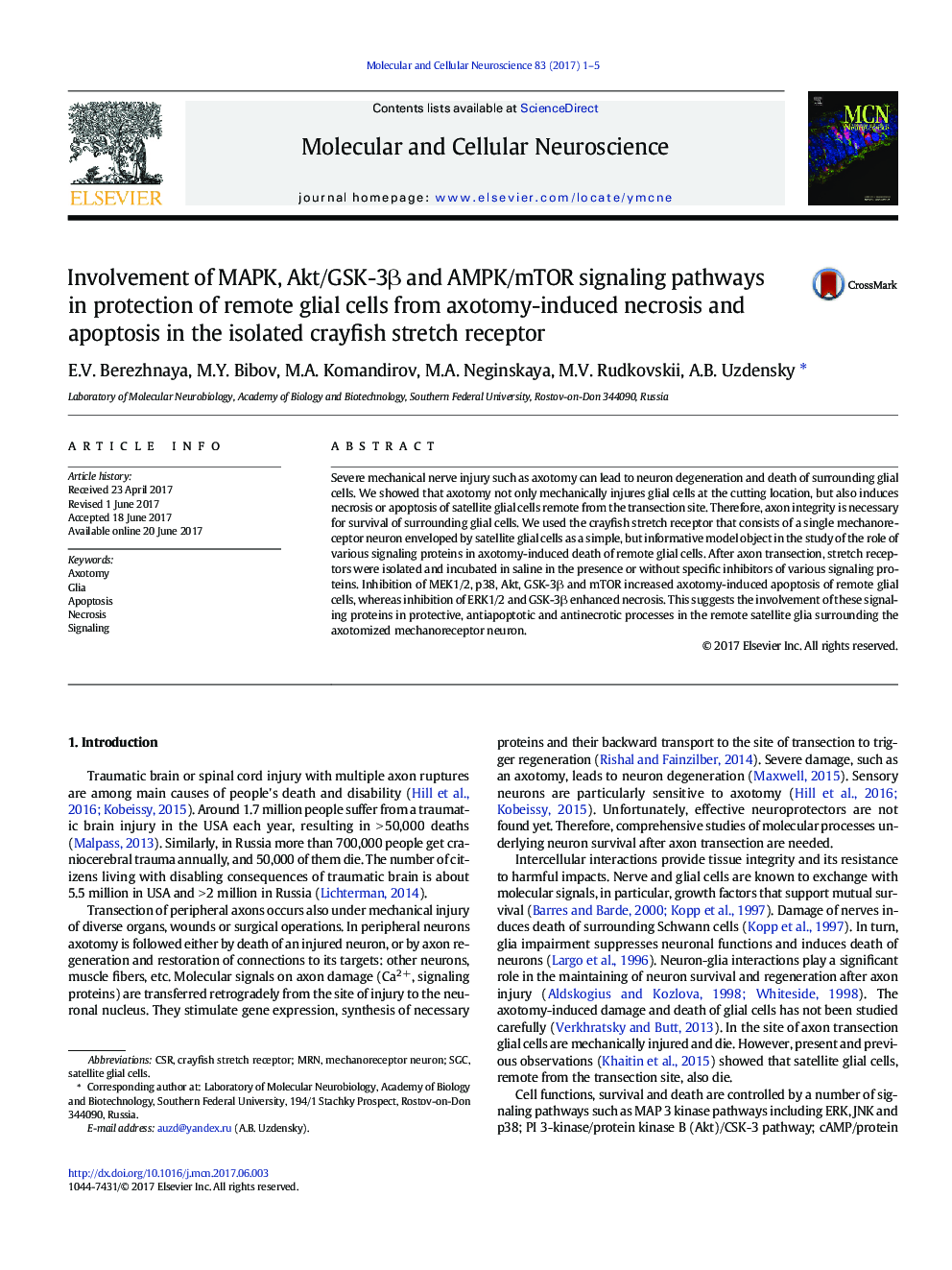| Article ID | Journal | Published Year | Pages | File Type |
|---|---|---|---|---|
| 5534398 | Molecular and Cellular Neuroscience | 2017 | 5 Pages |
â¢Axon integrity is necessary for survival of surrounding glial cellsâ¢Axotomy induces death of satellite glial cells remote from axon transection siteâ¢MEK1/2, p38, Akt, GSK-3β, mTOR protect glial cells from axotomy-induced apoptosisâ¢ERK1/2 and GSK-3β protect satellite glial cells from axotomy-induced necrosis
Severe mechanical nerve injury such as axotomy can lead to neuron degeneration and death of surrounding glial cells. We showed that axotomy not only mechanically injures glial cells at the cutting location, but also induces necrosis or apoptosis of satellite glial cells remote from the transection site. Therefore, axon integrity is necessary for survival of surrounding glial cells. We used the crayfish stretch receptor that consists of a single mechanoreceptor neuron enveloped by satellite glial cells as a simple, but informative model object in the study of the role of various signaling proteins in axotomy-induced death of remote glial cells. After axon transection, stretch receptors were isolated and incubated in saline in the presence or without specific inhibitors of various signaling proteins. Inhibition of MEK1/2, p38, Akt, GSK-3β and mTOR increased axotomy-induced apoptosis of remote glial cells, whereas inhibition of ERK1/2 and GSK-3β enhanced necrosis. This suggests the involvement of these signaling proteins in protective, antiapoptotic and antinecrotic processes in the remote satellite glia surrounding the axotomized mechanoreceptor neuron.
Graphical abstractDownload high-res image (113KB)Download full-size image
